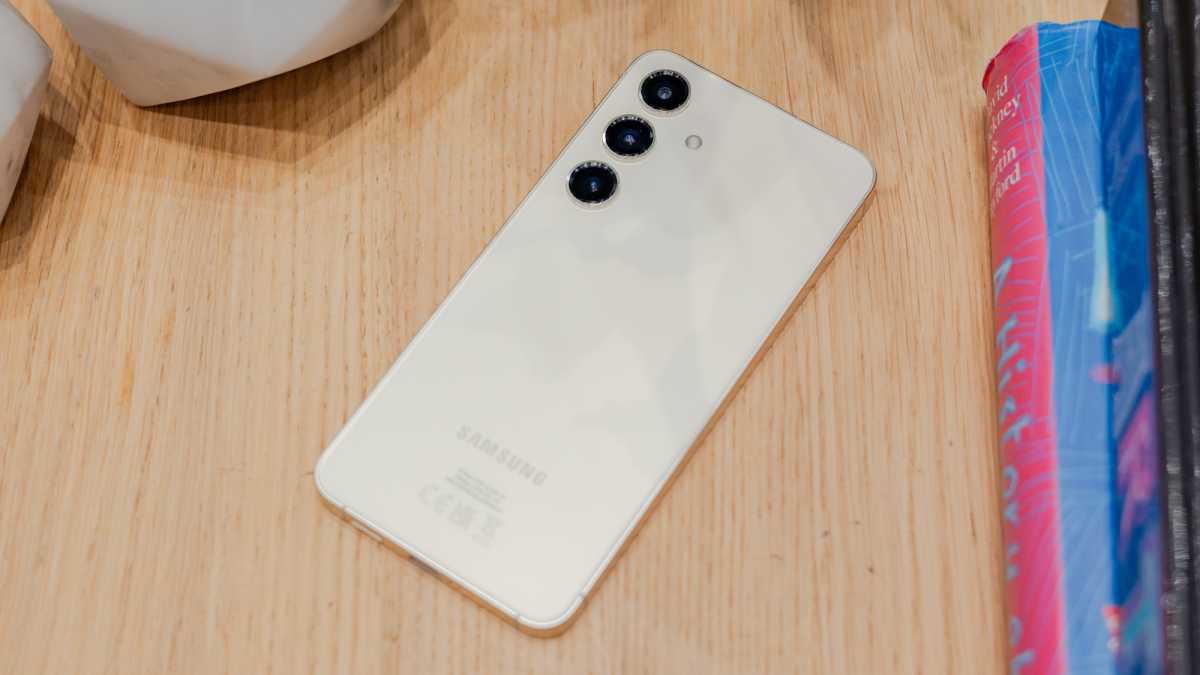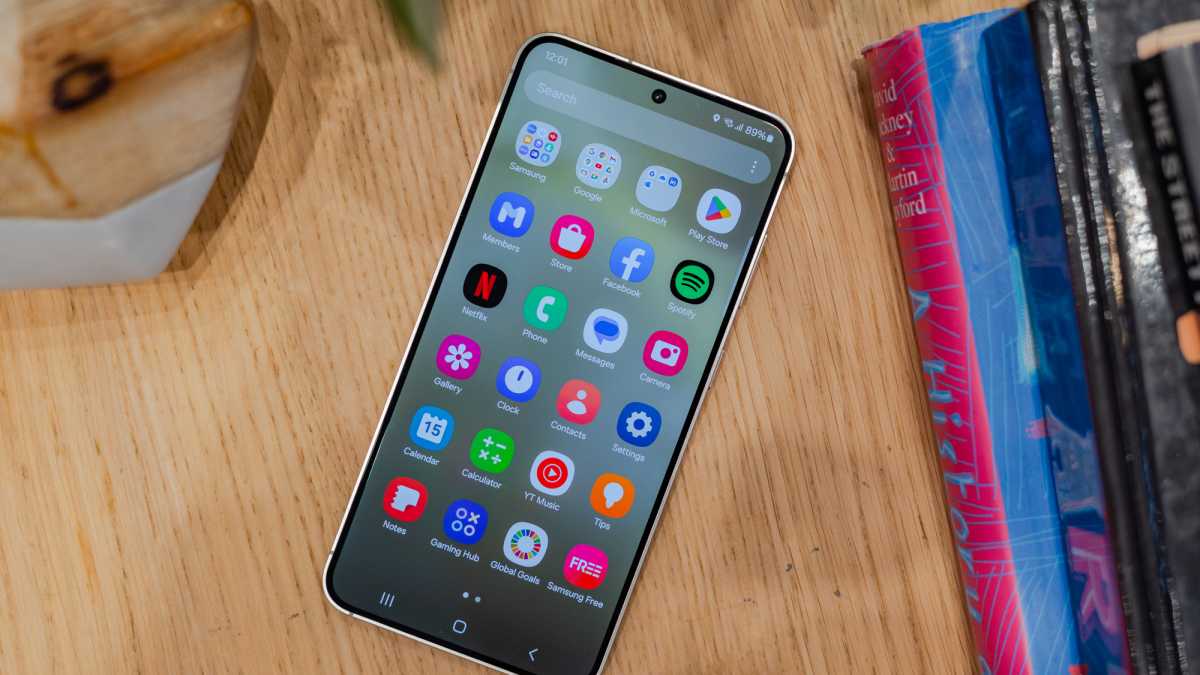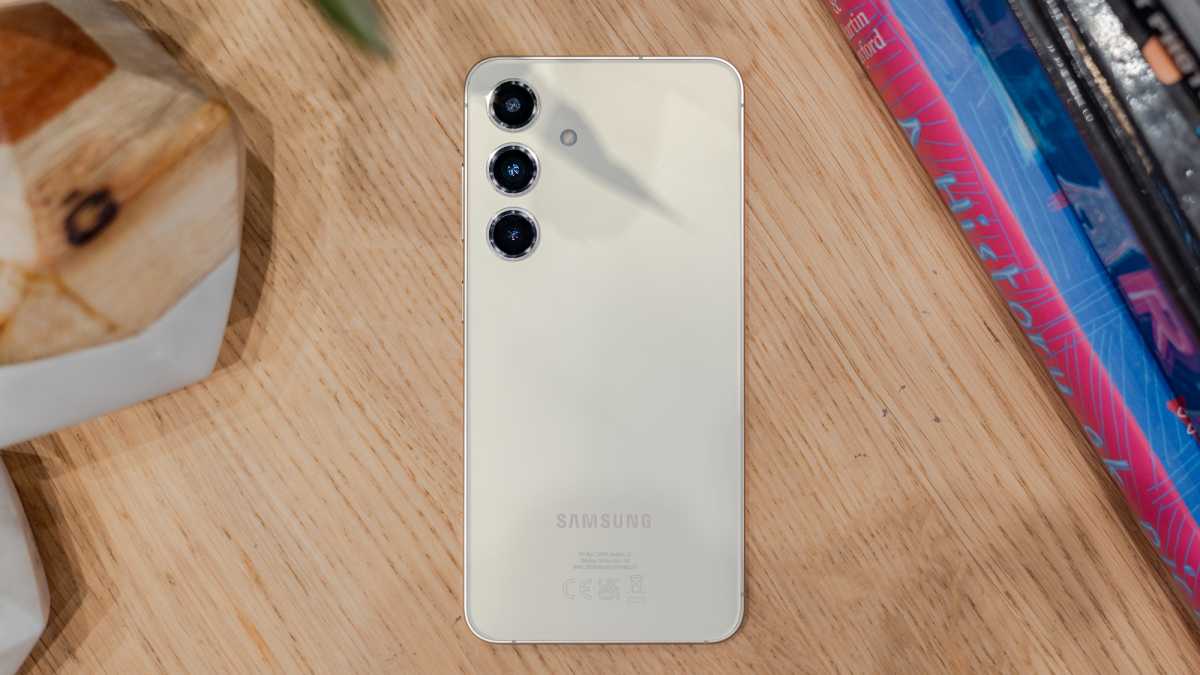When it comes to flagship smartphones, the rivalry between Apple and Samsung is the stuff of legend.
This year, Apple’s iPhone 16 and Samsung’s Galaxy S24 go head-to-head in a battle of design, performance, camera prowess, and innovation. However, while we’ve had the chance to extensively test and review the Galaxy S24, we have yet to experience the iPhone 16 firsthand.
Our comparison here is based on the official specifications and information provided by Apple, highlighting the key differences and similarities between these two high-end devices.
Differences between iPhone 16 and Samsung Galaxy S24
Build & Design
The iPhone 16 retains a classic look with an aluminium frame and frosted glass back, reminiscent of last year’s models. However, it features a new vertical dual-camera layout and introduces two new buttons: the Action button and the Camera Control button.
These buttons are customisable and bring an added level of functionality, with the Camera Control button designed to mimic the tactile feel of a DSLR’s shutter and zoom in one button.
Petter Ahrnstedt
On the other hand, the Galaxy S24 sticks to its familiar design language but with notable refinements. It has a flat aluminum frame that gives it a sleek, modern look, complemented by a new matte finish on the back that resists fingerprints and enhances grip. The edges are less curved compared to previous models, offering a more angular aesthetic too.

Dominik Tomaszewski / Foundry
While the iPhone 16 aims to blend elegance with innovation, the Galaxy S24 focuses on durability and user comfort. The choice in terms of design and construction of the two devices is therefore entirely a matter of preference.
Display & Speakers
The iPhone 16 features a 6.1-inch Super Retina XDR OLED display, with a resolution of 2556 x 1179 pixels. It supports HDR10 and Dolby Vision, offering deep blacks and vibrant colours.

Petter Ahrnstedt
The display peaks at 2000 nits outdoors, making it easy to view, even in bright sunlight. However, it lacks the 120Hz ProMotion refresh rate found on the iPhone 16 Pro models, which some users might miss.
The Galaxy S24 steps up with a 6.2-inch LTPO AMOLED display that dynamically adjusts its refresh rate between 1Hz and 120Hz, providing smooth scrolling and improved battery efficiency.
It also boasts a higher peak brightness of up to 2600 nits, ensuring excellent visibility in all lighting conditions.

Dominik Tomaszewski / Foundry
While the iPhone 16’s display might excel in colour accuracy and contrast, the Galaxy S24’s bigger screen and adaptive refresh rate serves up a smoother visual experience.
In terms of audio, both devices feature stereo speakers that deliver clear and rich sound.
Performance
Under the hood, the iPhone 16 is powered by the cutting-edge A18 chip. Built on a 3nm process, it features a 6-core CPU, a 5-core GPU, and a 16-core Neural Engine that’s capable of advanced machine learning tasks.
Apple claims a 30% improvement in CPU performance and a 40% boost in GPU efficiency, compared to the previous generation. This chip promises to handle everything from intensive gaming to complex multitasking with ease, setting a new benchmark for mobile processors.
The Galaxy S24 – depending on the region – comes equipped with either the Exynos 2400 (in regions like the UK) or the Snapdragon 8 Gen 3 (in the US and other select markets).
Both variants deliver impressive performance, with the Snapdragon version having a slight edge in benchmarks. The Exynos 2400 – although slightly behind in raw power – is optimised for efficiency and day-to-day performance.

Dominik Tomaszewski / Foundry
In practical use, both chips are more than capable of handling today’s demanding apps and games, but Apple’s A18 may offer superior sustained performance, especially in graphics-intensive scenarios.
Cameras
Camera capabilities are often a deciding factor for many smartphone buyers, and both the iPhone 16 and Galaxy S24 bring their A-game.
The iPhone 16 features a dual-camera setup with a new 48Mp Fusion main sensor and a 12Mp ultrawide lens. The Fusion sensor allows for 2x optical-quality zoom by cropping from the full sensor, giving users more flexibility without the need for additional lenses.
The Camera Control button enhances usability, offering precise control over the camera’s features, and is expected to integrate with future AI capabilities for object and place recognition.

Petter Ahrnstedt
Samsung’s Galaxy S24 maintains the same camera hardware as its predecessor: a 50Mp main sensor, 12Mp ultrawide, and 10Mp telephoto lens. Despite the unchanged hardware, software improvements in image processing result in more natural colour reproduction and less aggressive sharpening.
The Galaxy S24 also introduces new AI-powered editing tools that can remove unwanted objects and reflections, although these features can sometimes produce mixed results.

Dominik Tomaszewski / Foundry
Overall, the iPhone 16 might have a slight edge in computational photography, but the Galaxy S24’s versatility and telephoto capabilities cannot be overlooked.
Battery & Charging
The iPhone 16 has seen a modest increase in battery capacity, offering up to 22 hours of video playback (according to Apple). It supports fast 25W MagSafe charging, which can replenish the battery to 50% in just 30 minutes with the appropriate charger.
Additionally, Apple has improved the phone’s thermal design to support higher sustained performance during intensive use.
The Galaxy S24 – with its 4000mAh battery – offers similar all-day performance and supports 25W wired charging and 15W wireless charging. While the charging speeds are on par with the iPhone, the S24’s battery may offer slightly better longevity for users who engage in heavy multitasking or gaming.

Dominik Tomaszewski / Foundry
Both devices provide reliable battery life, but users who prioritise faster charging may lean towards the iPhone 16’s improved MagSafe capabilities.
Software & Apps
The iPhone 16 runs on iOS 18, which introduces new features like Writing Tools, revamped Siri, and advanced integration with Apple’s ecosystem. iOS 18 focuses on usability, privacy, and interconnectivity, making it a strong choice for users invested in the Apple ecosystem.
The inclusion of the Apple Intelligence, Action button and Camera Control button also deliver a new layer of interaction, enhancing the user experience.
Samsung’s Galaxy S24 operates on One UI 6.1, built over Android 14. It includes several new AI-driven features, such as enhanced photo editing tools and advanced multitasking capabilities.
One UI is known for its customisation options and integration with Samsung’s ecosystem. Samsung promises seven years of software updates, which is on par with Apple’s long-term iOS support, making both devices reliable choices for long-term users.

Dominik Tomaszewski / Foundry
Price & Availability
Both the iPhone 16 and Galaxy S24 start at £799/$799 for their respective 128GB base models, and are available globally through their respective online stores, carriers, and authorised retailers.
Should you buy the iPhone 16 or Galaxy S24?
Choosing between the iPhone 16 and Galaxy S24 largely depends on personal preferences and ecosystem loyalty.
The iPhone 16 offers a seamless integration with Apple’s ecosystem, an innovative new Camera Control button, and a powerful A18 chip, which promises top-tier performance. It’s an excellent choice for users who value build quality, camera innovation, and a cohesive software experience.
The Galaxy S24, on the other hand, offers a more versatile display, extensive customisation options, and strong camera performance, including a capable telephoto lens. It’s ideal for users who prefer the flexibility of Android, a compact form factor, and Samsung’s commitment to software longevity.

Dominik Tomaszewski / Foundry
In the end, both devices are excellent choices in their own right. Whether you prefer iOS or Android, either of these smartphones will provide a premium experience that meets the needs of most users.
Leave A Comment
You must be logged in to post a comment.